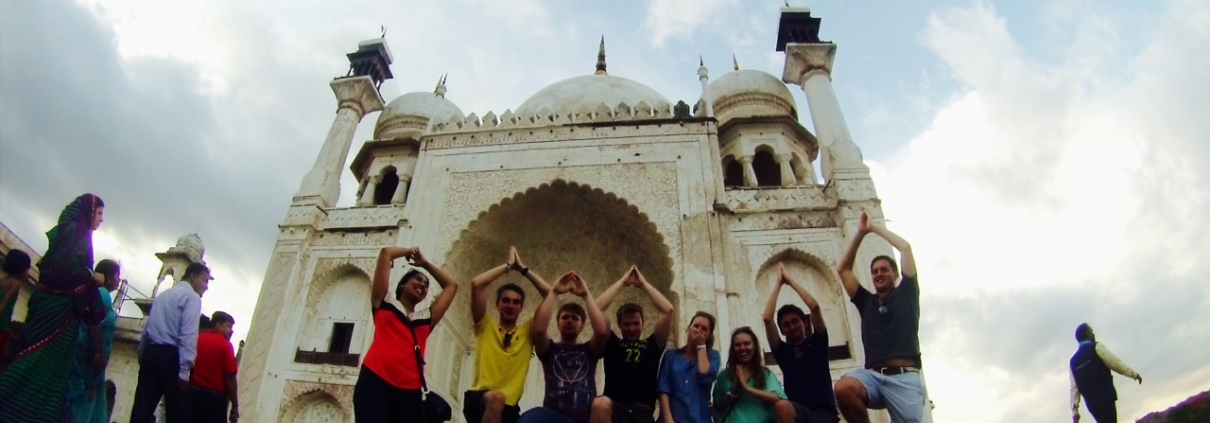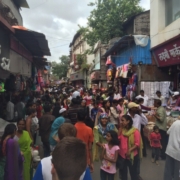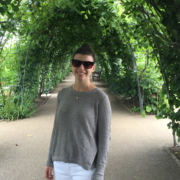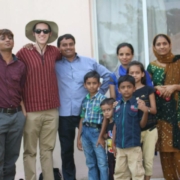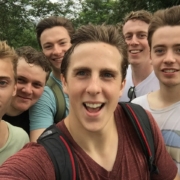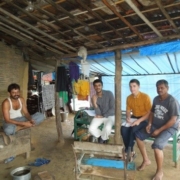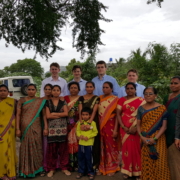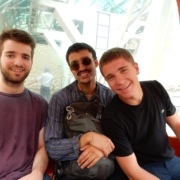Reserve Bank of India – Second Week
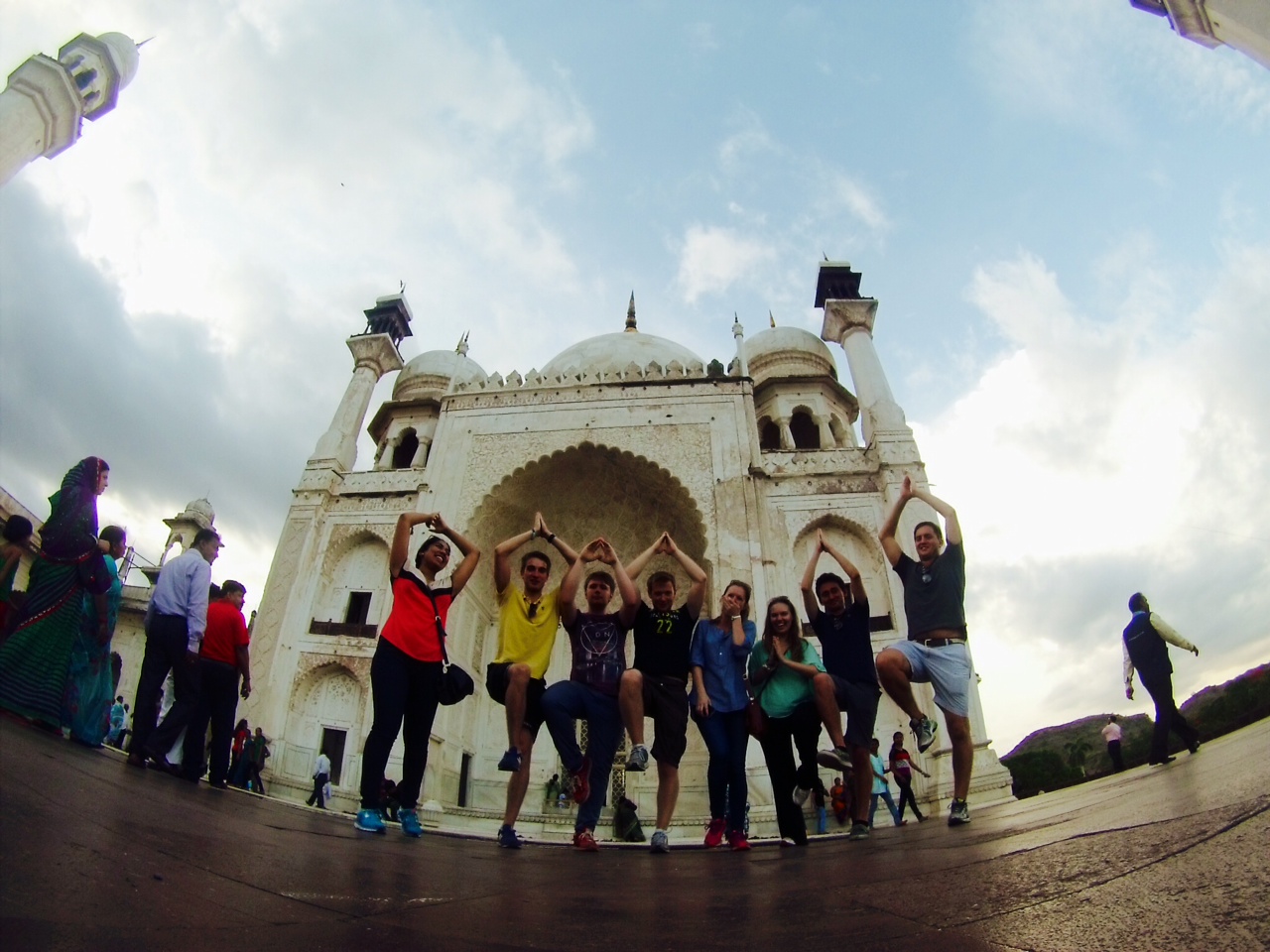 A sweet, subtle petrichor suffused the Pune air, heralding the arrival of the much awaited monsoon. The monsoon has one of the most transformative effects on a landscape in the world, changing it from barren fields into a lush green carpet. Moreover, its arrival is eagerly anticipated across all social strata. In many respects the Indian economy relies wholeheartedly on weather that we very much take for granted back home. Though the monsoon has not yet built up to its notorious tumult, we have seen glimpses of its infamous power.
A sweet, subtle petrichor suffused the Pune air, heralding the arrival of the much awaited monsoon. The monsoon has one of the most transformative effects on a landscape in the world, changing it from barren fields into a lush green carpet. Moreover, its arrival is eagerly anticipated across all social strata. In many respects the Indian economy relies wholeheartedly on weather that we very much take for granted back home. Though the monsoon has not yet built up to its notorious tumult, we have seen glimpses of its infamous power.
Undaunted, we ventured out from Pune towards Aurangabad on a 700 km whirlwind adventure, taking a path northeast of Pune deep into the heart of Maharashtra. On a winding and bumpy ride traversing ridges, earthen planes and sprawling metropolises, the threat of wayward bovine herds nonchalantly wandering down busy highways was a very real one. Forts, medieval walls and minarets sprung up out of the scrubland and stood dauntingly atop steep hills, dominating the skyline and presiding over the fields below. After stopping at Windsor Castle, the hotel at which we were staying, we again set off with the promise of caves and a very familiar building.
Set high in the hills, the monolith at the Ellora caves is truly a marvel of human dedication and determination. Created without modern machinery–just centuries of toil, architects, artisans and labourers–the magnificent rock structure emerges from the mountainside, adorned with images of deities, elephants, histories and stories. The other caves hosted a mixture of Buddhist and Hindu imagery, including an enormous effigy of Buddha with his usual peaceful countenance.
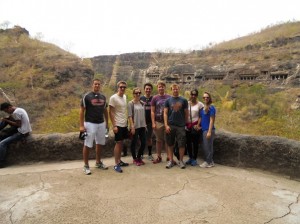 On the journey back, the bus driver pulled over to an isolated shop touting a frenzy of coloured marvels. With considerable excitement, we descended on a small fabric shop where haggled for and eventually purchased 10 pillowcases adorned with camels, elephants and landmarks, 5 scarves and a sari.
On the journey back, the bus driver pulled over to an isolated shop touting a frenzy of coloured marvels. With considerable excitement, we descended on a small fabric shop where haggled for and eventually purchased 10 pillowcases adorned with camels, elephants and landmarks, 5 scarves and a sari.
When we arrived back in the town of Aurangabad, we were taken to the, perhaps unfairly dubbed, ‘mini Taj Mahal.’ The real name is the Bibi Ka Maqbara and, in honesty, it is a rather impressive spectacle. It certainly scores highly on architectural marvel, but low on originality given the fact the actual Taj Mahal was built by his father some 40-50 years earlier.
That night, a brief respite from a heavily curry-based diet was granted by the kind chefs of the Windor Castle. Previously the only non-Indian food we had had was an enormous steak, lamb and chicken combination from the madhouse grill. After dinner, we enjoyed a fairly subdued night of card playing.
The next morning, three of our group were struck down with a mysterious illness, but they managed to rally for a second day of exploring caves, roads and monkeys. The Ajanta caves were discovered by a group of British soldiers who were on an excursion to hunt tigers. They came across a series of caves carved out of a horseshoe shaped hill. Built over two thousand years ago by Buddhists before the religion mysteriously left India to be replaced by Hinduism. Our group explored the valley and the wonders that lay within. The caves were a rich depiction full of colours and images of Buddha and his life including his many reincarnations.
Monkeys seem to be scattered fairly liberally around cave and religious sites. They look friendly from a distance but–as it transpires–they are mostly just thieves.
